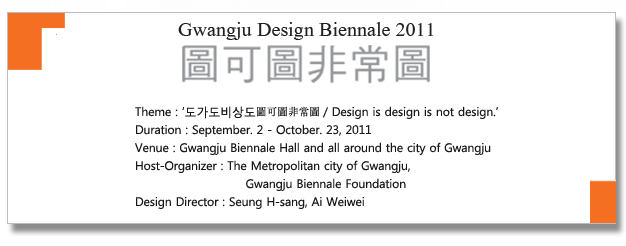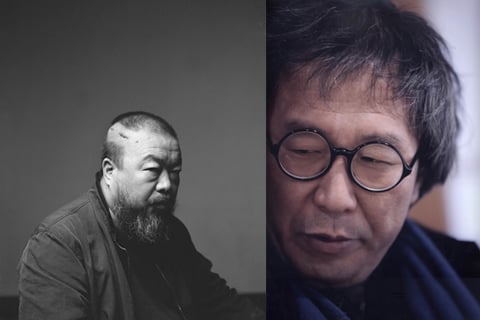The 2011 Gwangju Design Biennale
Iris Yirei Hu
12/19/2010


The emblem of culture, modernity, and innovation, design encapsulates society, and prides itself through a number of categories including but not limited to fashion, interior decorating, architecture, food, graphic, and engineering. It has also redefined marketing and advertising in ways we cannot ignore. In short, design reflects our relationship to the space in which we live. It is the byproduct of material culture, constantly in flux with social changes.
The 2011 Gwangju Design Biennale, co-directed by internationally renowned architects Ai Weiwei and Seung H-Sang, debates and challenges preexisting notions of design. The exhibition focuses on the theme “Design is Design is not Design,” and will question the boundaries between design and “non-design.” The theme is based on the first words of Lao Tze’s Tao Te Ching, “The way that is the way is not always the way. The name that is the name is not always the name,” which gets revised to, “Design that is design is not always design. Non-design that is non-design is not always non-design.” In a similar manner, the exhibition will reinterpret, redefine, and re-envision design as a response to changing networks within the global environment.
The exhibition is led by 8 curators and 2 designers, and is divided into six sections: Academy and Thematic Installation, Named Design, Unnamed Design, Urban Follies, Community, and Biennale City. The exhibition will challenge and allow room for unconventional and unexpected concepts, practices, and approaches to reflect the dynamism of our changing global environment. It aims to go beyond the established and institutionalized design industry, into a critique and reinterpretation of contemporary design.
The 4th Gwangju Design Biennale will open on September 2, 2011 until October 23, 2011. The exhibition will take place at the Gwangju Biennale Hall, and will also expand into the entire city of Gwangju.


